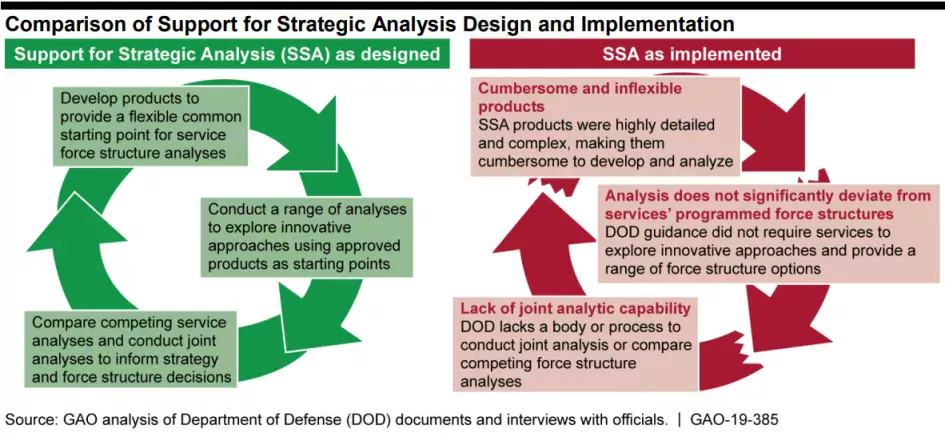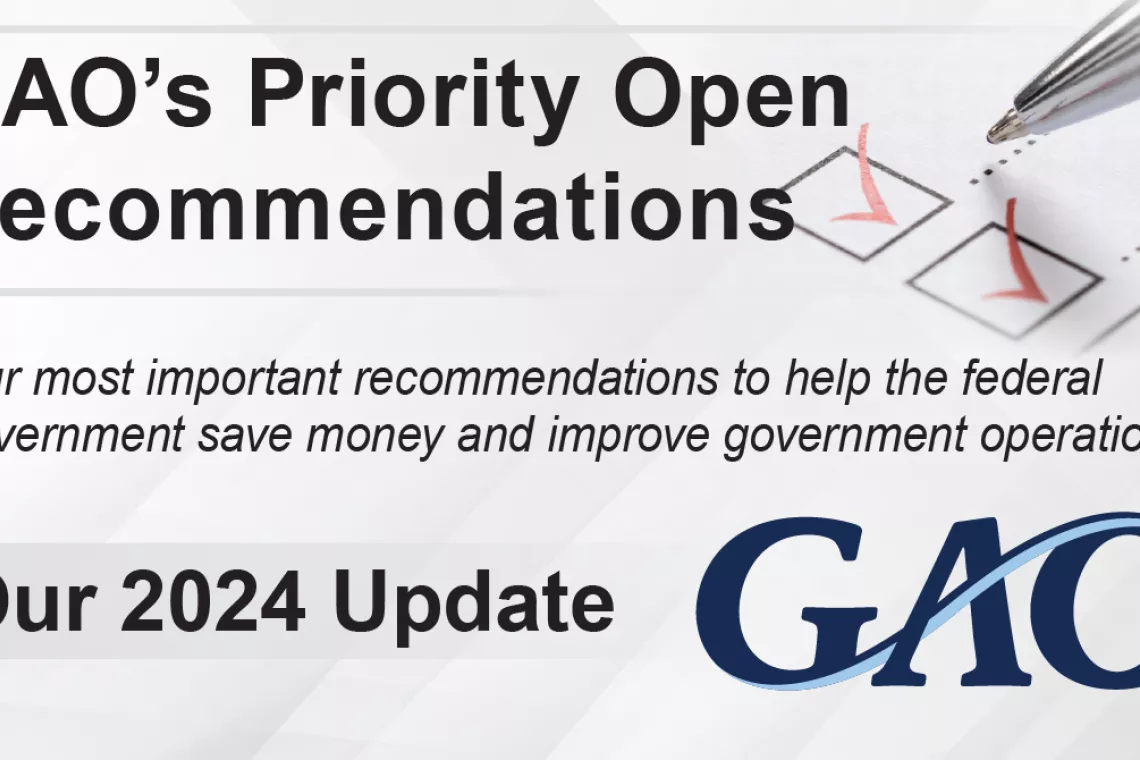DOD: Prioritizing Amid Changing Threats
The 2018 National Defense Strategy (which guides the military’s defense priorities) calls for the Department of Defense (DOD) to urgently develop a lethal, resilient, and rapidly adapting joint force in order to address growing threats to U.S. security. But how does an agency as large as DOD figure out what it needs in order to adapt to growing threats?
Today’s WatchBlog looks at how DOD provides senior leaders with the information they need to make tough decisions about the size and capabilities of the military.
Aligning needs with strategy
Similar to any agency, DOD has to balance competing priorities when building its budget request. Decisions about whether to buy more ships for the Navy or combat vehicles for the Army, for example, can have a big effect on the military services’ ability to carry out their missions.
To help senior leaders make informed choices, DOD designed an analytic process—called Support for Strategic Analysis (SSA)—that was intended to help DOD evaluate its force structure needs (such as personnel and equipment) and develop its budgets to meet the priorities of the National Defense Strategy.
However, we found that SSA has been unable to provide senior leaders with the timely and comprehensive analyses they need to adjust the military’s size and capabilities to meet defense priorities. We found 3 main challenges:
- It was difficult to develop a common "starting point" for force structure analysis;
- The military services' analyses largely supported the status quo; and,
- The process did not provide a way to compare options and identify tradeoffs across DOD.
A stark warning
Having a functioning process to determine military needs is critical for national security. The National Defense Strategy issued a stark warning: failure to adapt will rapidly result in a force that is irrelevant to the threats it will face. DOD has struggled in the past to improve this process, but has recently reinvigorated its efforts. We made three recommendations to help address the challenges we identified as DOD works to improve its analytic support to senior leaders. Read our report to learn more.
Comments on GAO’s WatchBlog? Contact blog@gao.gov.
GAO Contacts
Related Products

GAO's mission is to provide Congress with fact-based, nonpartisan information that can help improve federal government performance and ensure accountability for the benefit of the American people. GAO launched its WatchBlog in January, 2014, as part of its continuing effort to reach its audiences—Congress and the American people—where they are currently looking for information.
The blog format allows GAO to provide a little more context about its work than it can offer on its other social media platforms. Posts will tie GAO work to current events and the news; show how GAO’s work is affecting agencies or legislation; highlight reports, testimonies, and issue areas where GAO does work; and provide information about GAO itself, among other things.
Please send any feedback on GAO's WatchBlog to blog@gao.gov.






